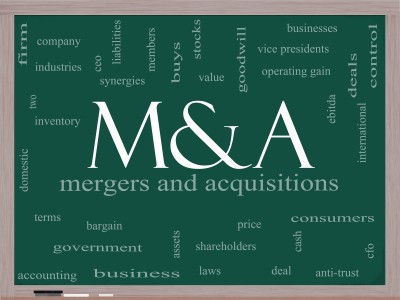Firm Management
Set the M&A Negotiating Table with the Right Expectations
Experience dictates that the parties involved in M&A need to prioritize their expectations of what they want from—and bring to—the deal to figure out the appropriate terms.
Jan. 23, 2024

By Ira Rosenbloom.
While numbers and data understandably create a comfort zone for most CPAs, only focusing on financial terms and bottom lines during M&A discussions can be a dead end.
Experience dictates that the parties involved in M&A need to prioritize their expectations of what they want from—and bring to—the deal to figure out the appropriate terms.

Thanks for reading CPA Practice Advisor!
Subscribe for free to get personalized daily content, newsletters, continuing education, podcasts, whitepapers and more...
Already registered? Login
Need more information? Read the FAQ's
Often, deals blow up because the parties can’t achieve a confluence of expectations—and the fact that the numbers drove the dialogue and not the other way around. The potential upside for all parties was not formalized and communicated.
Take the time to align expectations by addressing the following relevant matters at the onset.
Personnel. So many sellers, especially smaller firms, believe that the successor will quickly and dramatically (some might say, “magically”) improve production capacity. Both sides need to discuss needs, timing, and potential solutions. There is no magical fix.
Client Fee Compatibility. Many firms think that because there are common niches and common service levels that the fees will align easily. Bigger firms are pushing higher fees to limit the number of clients and the stress that comes from managing many accounts. Smaller firms need to understand how the current fees align and determine whether there is realistic potential to keep up with the bigger firm. The larger firm must be upfront and do its own assessment of the potential to upsell and escalate fees.
Career Advancement. Both sides want talented people to advance and will want to reduce the risk of a talent exit. Clear understanding of the criteria for promotion in the successor firm—and how it corelates with the aligning firm—are necessary. The more time and the more specific the explanation of the career path, accountability, and support, the more motivated the parties may become.
Growth. Deals must make money for both sides so growth is critical. Comfort with selling services and being accountable is vital. Both sides must discuss targets and support for reaching the targets. Selling is a talent and a good salesperson in theory should be able to sell no matter what. However, when it comes to professional services and asking for big fees, that is not always the case. Incentives around growth or payouts tied to growth are common terms. The specifics need to reflect confidence and grounded expectations.
Leadership. Parties often assume that the bigger firm can manage more effectively or has deeper technical skills. Not only is that not on the mark, but many times the larger firm knows it and is looking for new leadership. Clarity on roles—whether they be technical, departmental, firm wide, or managerial—is essential. The more pressure and the more talent that the smaller firm may be asked for, the more the terms may need to be considered or the deal may have to be reconsidered.
With a solid alignment around expectations, the parties can figure out the right terms. Risk, reward, responsibility, and accountability are necessary elements to computing terms. You cannot be comfortable with the terms without defining the expectations.
===
Ira Rosenbloom is the chief operating executive of Optimum Strategies.
